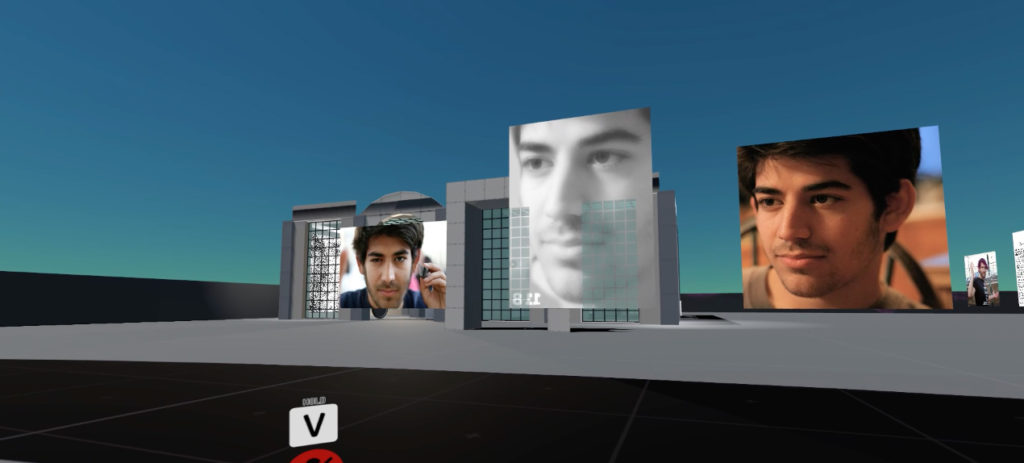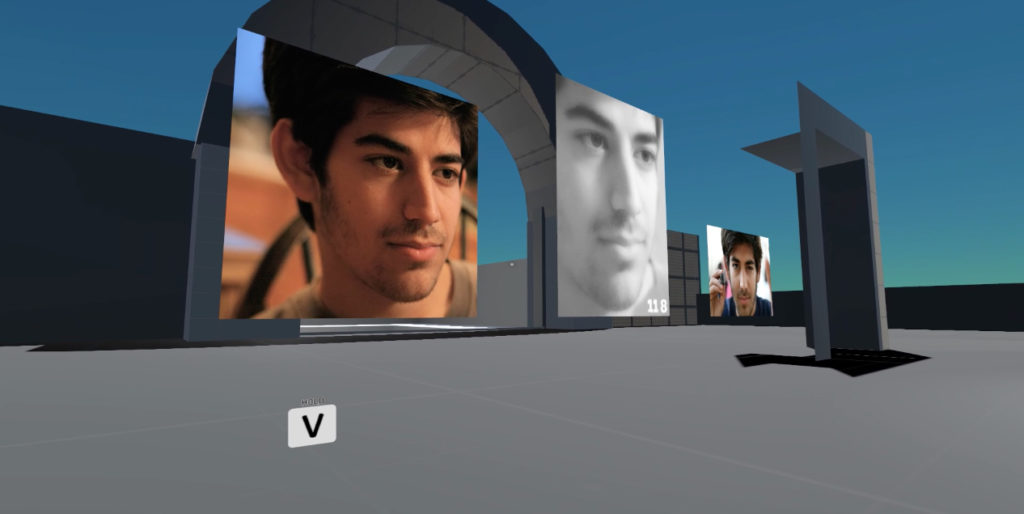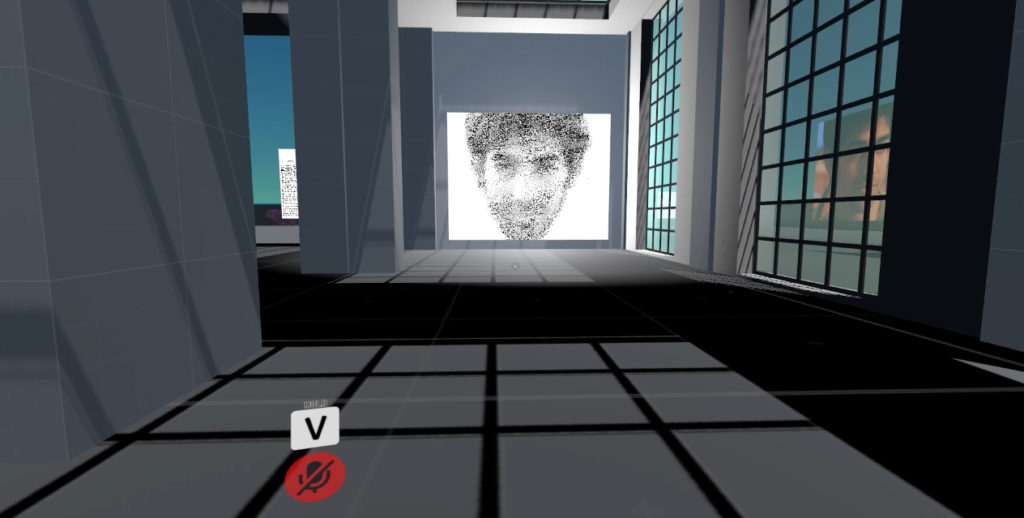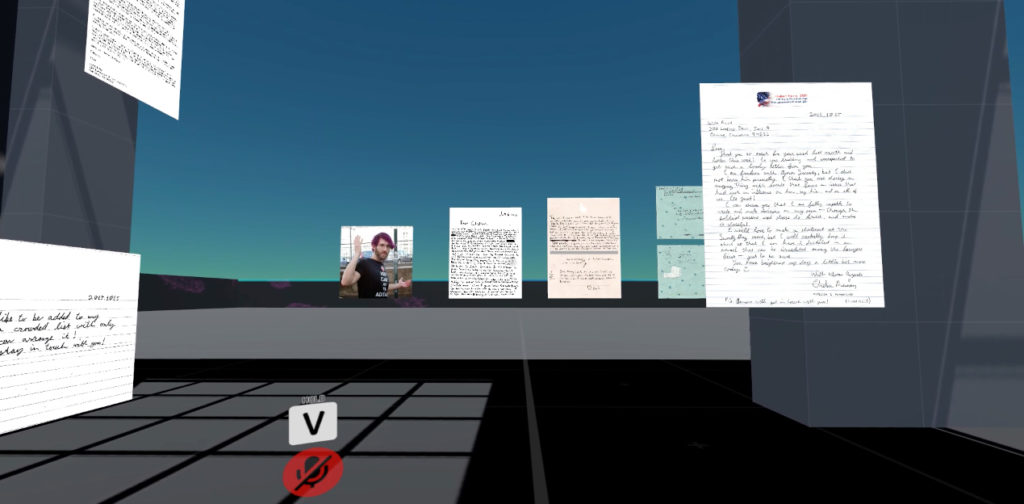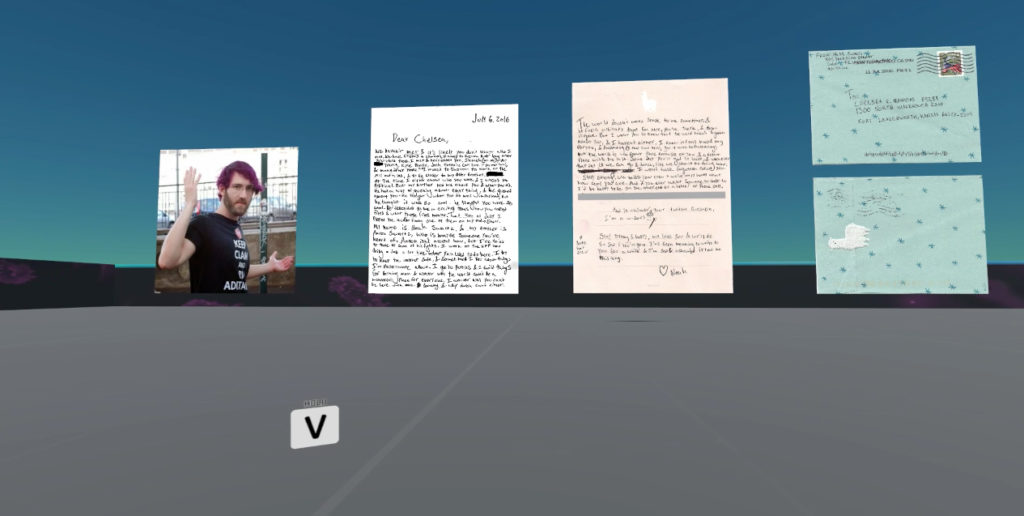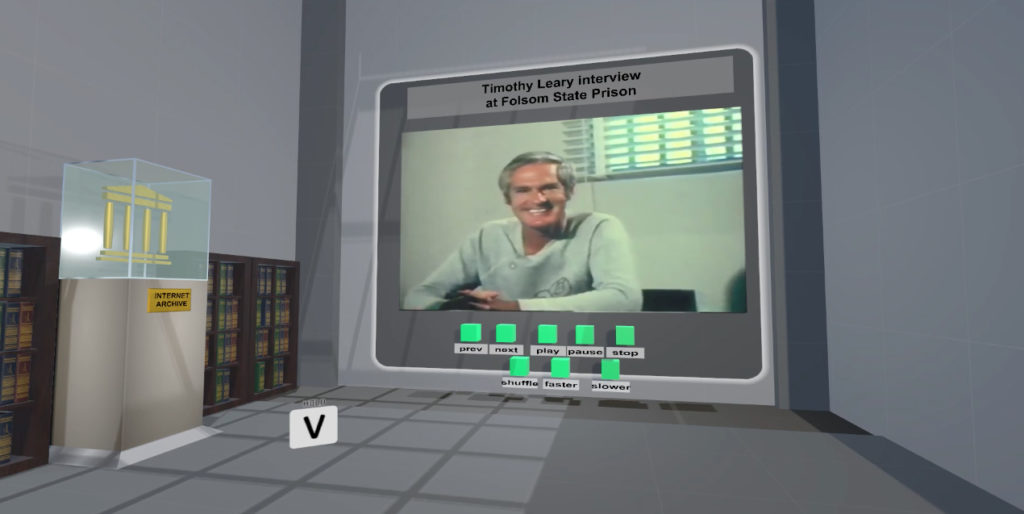Updated June 12, 2020
By Lisa Rein
Index
- How to visit our new prototype in VR Chat
- In-World Photos of Our New VR Chat Prototype
- Background: How This Project Started (w/ pics of our original prototype)
HERE IS OUR LATEST CODE – On our ICE-Free Repository
How to visit our new prototype in VR Chat
Step One:
Even if you have an Oculus Rift or Oculus Quest – it’s difficult (if not impossible) to create an account when you have your headset on.
So – use a computer and web browser to go to https://vrchat.com/ – and create an account on the website.
Step Two:
Choose either the Steam or Oculus software and download it. If you don’t have an Oculus headset, you can still play the game using steam on your PC (here are the system requirements for that).
Then you can use you , using your “W, A, S, and Z” keys to move around.
Step Three:
Read the “read me” file from our freely available open source code base for complete instructions.
In-world Photos of Our New VR Chat Prototype
Background: How This Project Started
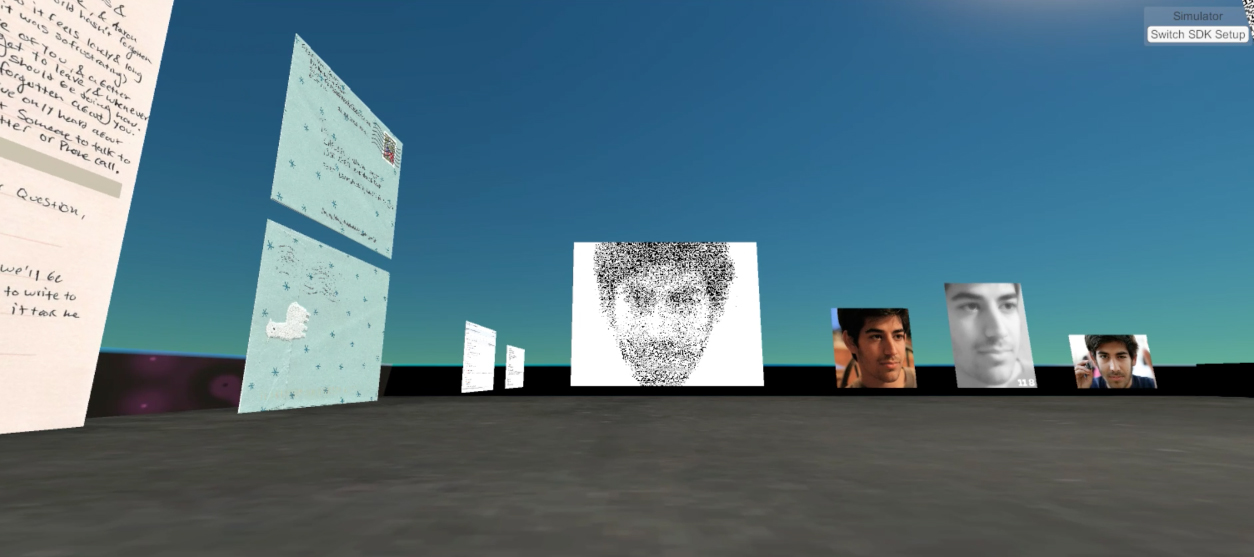
At the end of our 2017 Aaron Swartz Day weekend, we decided collectively to keep the momentum going on all of our hackathon projects. Some of us had experimented with VR that weekend, and a group of us decided to keep going with our VR project.
As a result, a small team (Ryan Sternlicht, Bernice Chua, Alex Peake, Tracey Jaquith, Matteo Borri, Kenneth Bryan Smith & Ryan Junell) has been working closely with me on the first exhibit of what will be “The Swartz-Manning VR Museum, Art Gallery, and Fun House.”
We are building everything using the Unity gaming engine, and incorporating 3D art, gaming, history, and storytelling into an interactive virtual reality environment.
We will teach history and technology, while helping folks get acquainted with the basics of being in a Virtual Reality environment. We can help “newbies” get acquainted with VR, while providing entertaining and educational content.
Our hope is to become a premiere location – for artists, historians, educators and VR newbies, as VR gradually becomes more popular and enters into the mainstream – by providing an accessible, educational VR destination, and development platform, that can serve as an example to others.
The Swartz-Manning’s first exhibit will provide a detailed history of Aaron Swartz Day, including the story of how I worked with the Aaron Swartz Day community to provide friendship and support to Chelsea Manning, before she was released from military prison, in May 2017.
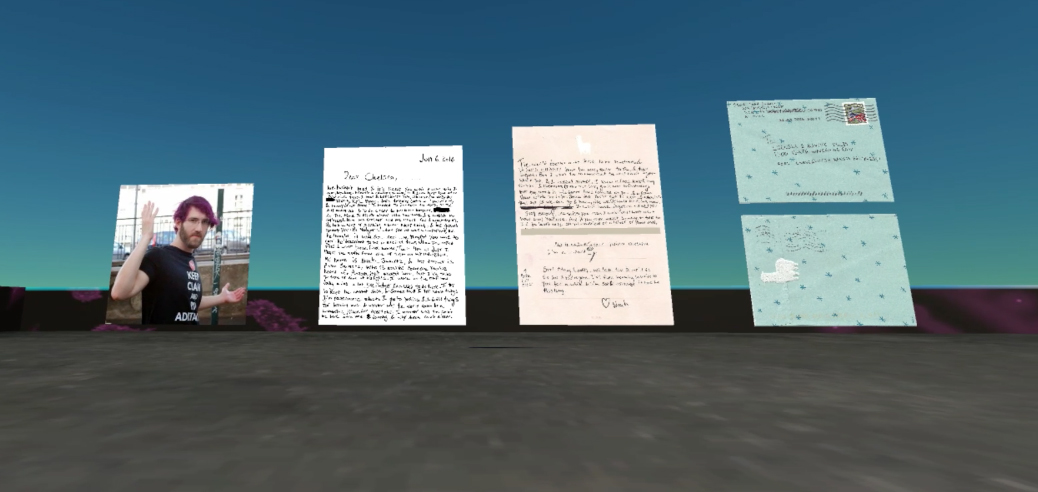
The second set of exhibits, displayed in their own “Leary Wing” of the museum, will eventually provide a complete timeline of Dr. Timothy Leary’s life, starting with his birth in 1920. For these exhibits, we are collaborating directly with Dr. Leary’s son, Zach Leary and his Personal Archivist, Michael Horowitz.
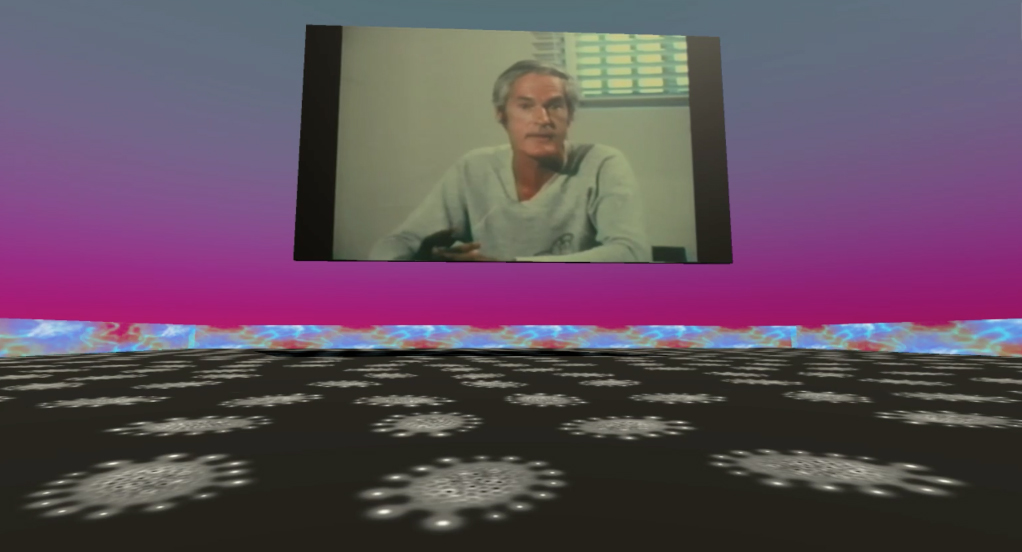
There will be numerous other museum and art gallery exhibits to follow, including historical artifacts such as letters, photographs, and audio/video recordings, merged with artistic installations; paintings you can step into and walk around in, to re-creations of historical rooms and locations, journals you can read through, so you can peer into the minds and thoughts of these three inspirational icons.
The Swartz-Manning VR Museum, Art Gallery, and Fun House will include four different types of installations:
1) A “traditional” kind of museum, in Virtual Reality.
“Traditional” museum exhibits (essentially, artifacts presented on walls and displays). (It seems kind of like a waste of VR to us, but we can do it, easily, and there seems to be a demand for it :-)
2) A “Fun House” version of the museum’s archival content.
The Fun House is a VR game that teaches about history while you wander around in different environments made up of the the same art and historical artifacts as the traditional version, all woven into a game, using animations and visually stimulating content and characters to create an ever-expanding game-like learning environment.
You can explore completely anonymously, or keep track of your trip, and share with others as a “flashback.” There is literally a trivia game that can be played with the “TimBot” robot character, or the player can watch videos, look through pictures, or just keep walking around looking at stuff in the house.
3) Art Gallery Installations, Platform & Templates to enable artists to create VR worlds.
An experimental Art Gallery platform and installations with “educational zones.” This Art Gallery platform will provide templates to enable artists to exhibit their own creations in VR easily. Artists may wish to exhibit in our gallery or greate a gallery of their own and we encourage derivative galleries – and make our templates freely available for use under a Creative Commons license.
Users can frequent our “Educational Zones” to learn how to quickly build their own VR spaces using CAD templates.These educational areas will explain and teach how the museum itself was built, step-by-step. (Complete with CAD templates.)
4) Learning Maker Technolgies and “Solar Survival” Technologies. (Coming Soon, Solarsurvival.net)
A focus on teaching “Solar Survival Technologies” – using VR and special inventions by our team members, to help teach folks that might be temporarily homeless (after a natural disaster, or just from being displaced) how to build devices such as solar cell phone chargers, or a freshly-invented “Vampire Charger,” that actually enables a cell phone to be charged safely from whatever random batteries happen to be lying around after a disaster, while protecting the phone from blowing up from a sudden power burst – for use by the homeless or after a natural disaster. (Technology courtesy of Advisory Board member Matteo Borri, who has just built a chlorophyll detector for NASA’s next MARS rover-like robot.)
We will most likely make the project available for download from the Internet Archive, and will have versions running on all platforms. Ideally, we will have multiple implementations going at first, while we conduct user testing and build out the first version of a framework.
Dr. Timothy Leary, Chelsea Manning and Aaron Swartz have more in common than you might think. All three of these people risked their freedom and their lives to make a positive difference in the world (whether they realized it at the time, or not :-) We will tell these stories, and others, while also creating an experimental art and teaching everyone VR development basics.
We are also experimenting with photogrammetry and 3D scanners, to construct 3-D models of many interesting objects from several historical archives, and also locations in nature, such as the desert.
The goal is to use a 3D scanner for some objects, and use photogrammetry “in the wild” for taking pictures of living objects. (I have a team member in the Imperial Desert, for instance, capturing wild flowers and insects there.) We are looking to partner with 3-D scanning companies and VR haptics companies, and various hardware accessory companies of all kinds. (Contact: Lisa Rein: lisa[at]lisarein.com)
If you’d like to learn more or contribute, email me at: lisa[at]lisarein.com.
Thanks for taking a look and giving me your ideas.
Lisa Rein
Founder, The SwartzManning Museum & Art Gallery
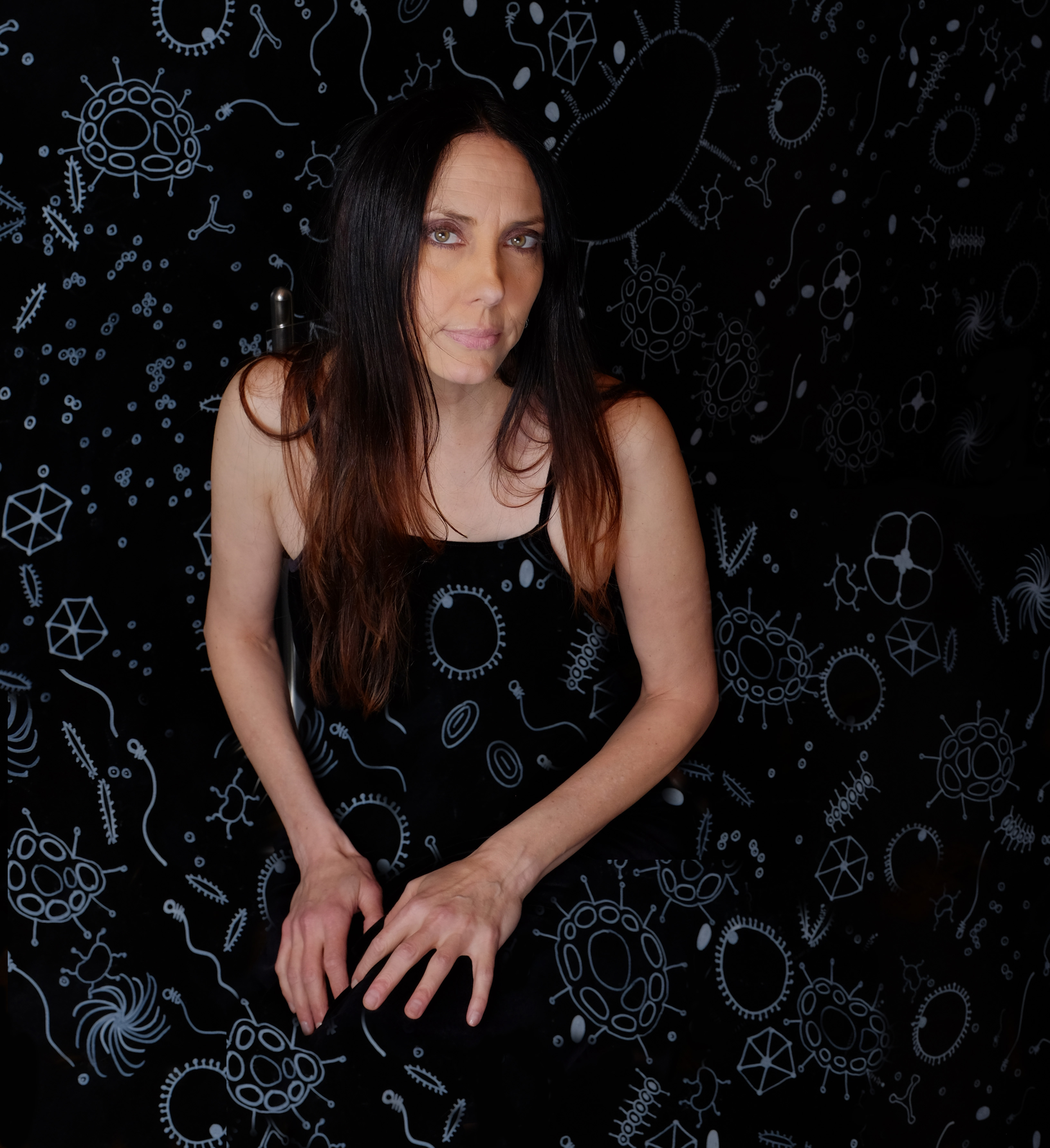
(Photo: Kevin Footer – Art Design/Concept: Kenneth Bryan Smith)
